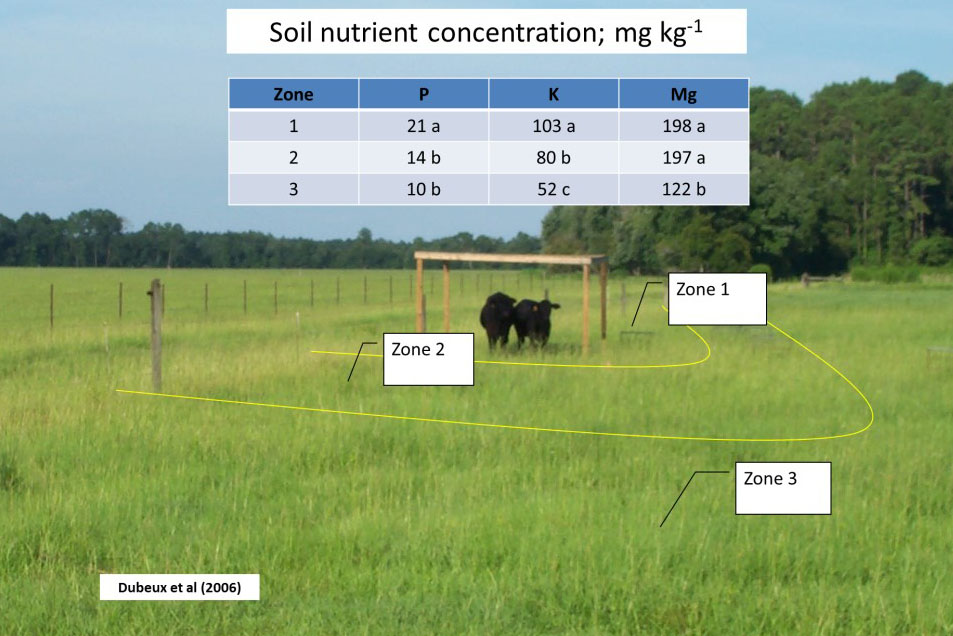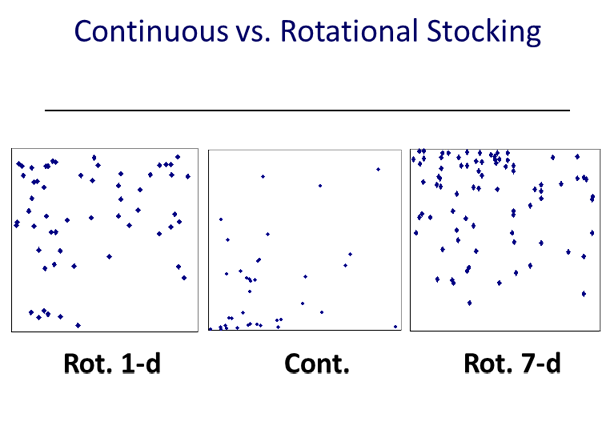
Jose Dubeux – UF/IFAS NFREC Forage Management Specialist
Introduction-How much of the nutrients cattle consume are recycled back to the pasture?
Livestock consume nutrients contained in forages and feeds and return most of them to the pasture in their waste in the form of manure and urine. On average, 80 to 90% of plant macronutrients ( N, P, K, Ca, Mg) consumed by cattle pass through their bodies in their waste onto pasture. The other 10-20% of the nutrients are retained in the animal’s body tissue, or are exported from the pasture in the form of animal products such as milk, wool, or beef.
As might be expected, variation exists between different production stages and types of animals, but the take home message is that the majority of nutrients are recycled back to the pasture. Most of the potassium (K) returns through urine, whereas most of the phosphorous ( P) and magnesium (Mg) return in manure. Nitrogen (N) is recycled in both urine and manure, but the proportion in each pathway varies with the protein in the diet. Diets rich in protein result in higher levels of N in the urine.
It is important to keep in mind, however, that although a majority of nutrients are recycled to the pasture, there is some net loss. Without fertilization, over the long term, there is a decline in soil fertility. This decline is much slower in grazed pastures than in a hay fields, where most of nutrients are exported in the hay and fed elsewhere.
Grazing patterns can effect pasture fertility
Cattle tend to congregate near shade and water, particularly during the warmer months. As a result, there is greater nutrient accumulation near these loafing areas, transferring soil nutrients from the remaining area of the pasture into the loafing areas (Figure 1). Cattle congregate near feeding sites, gates, and mineral troughs increasing waste deposition in these areas as described for shade and water sites. [important]When taking soil samples from pastures, keep these waste deposition patterns in mind. Nutrient-rich areas (near shade, water, and feeding sites) may overestimate the soil fertility of your pasture. [/important] If there are bare areas, because of excessive animal trampling, the best strategy is to avoid them when sampling the soil. If there is grass cover, sample the area with caution so that nutrient-rich areas are not over represented in your composite soil sample.
Management practices should be targeted to improve waste distribution. Frequently moving feeding sites and water troughs around the pasture will increase nutrient distribution. Another alternative is to rotationally graze the pasture. Short grazing periods (1-day) combined with high stocking density improves waste distribution, when compared to continuously stocked pastures (Figure 2). If each paddock in the rotation has portable shade structures, nutrient distribution will also be improved. Reducing the nutrient loading on the “hot spots” will also reduce nutrient losses and environmental problems. When nutrients are more evenly distributed across the pasture, the final result is the reduction of fertilizer costs to ranchers, and healthier, more productive pastures.

References:
Dubeux, J.C.B., Jr. 2005. Management strategies to improve nutrient cycling in grazed Pensacola bahiagrass pastures. Ph.D. dissertation Univ. of Florida, Gainesville.
 0
0
